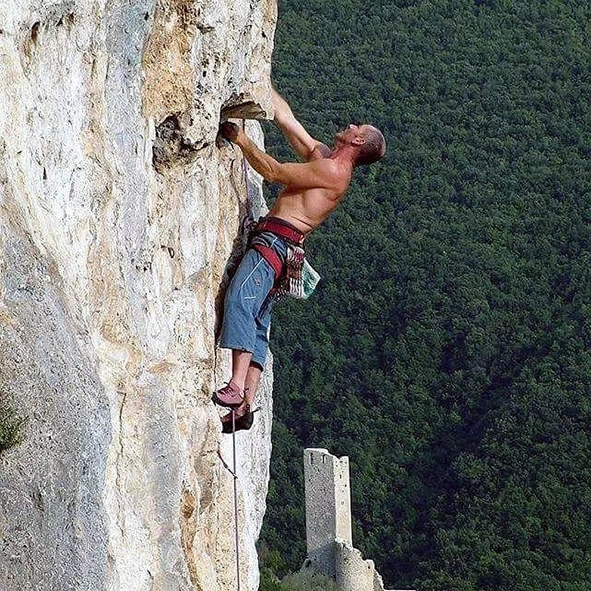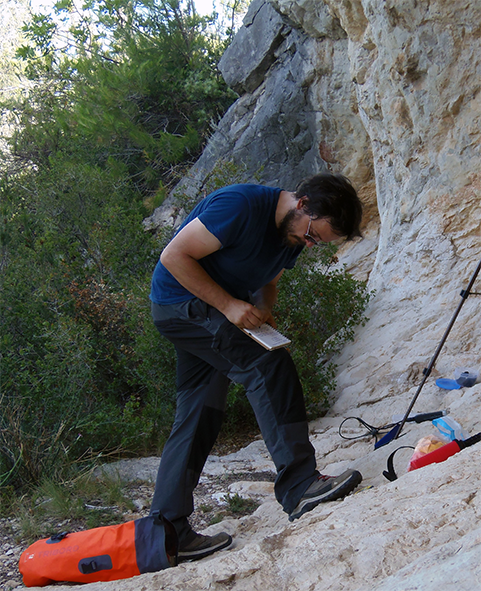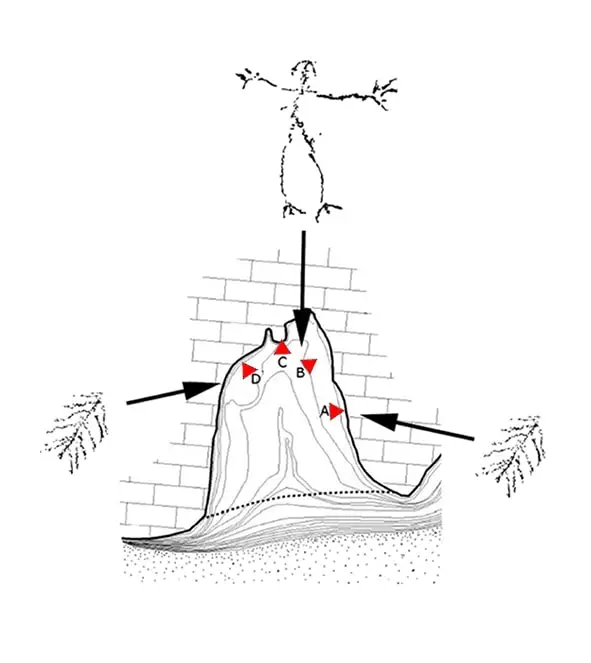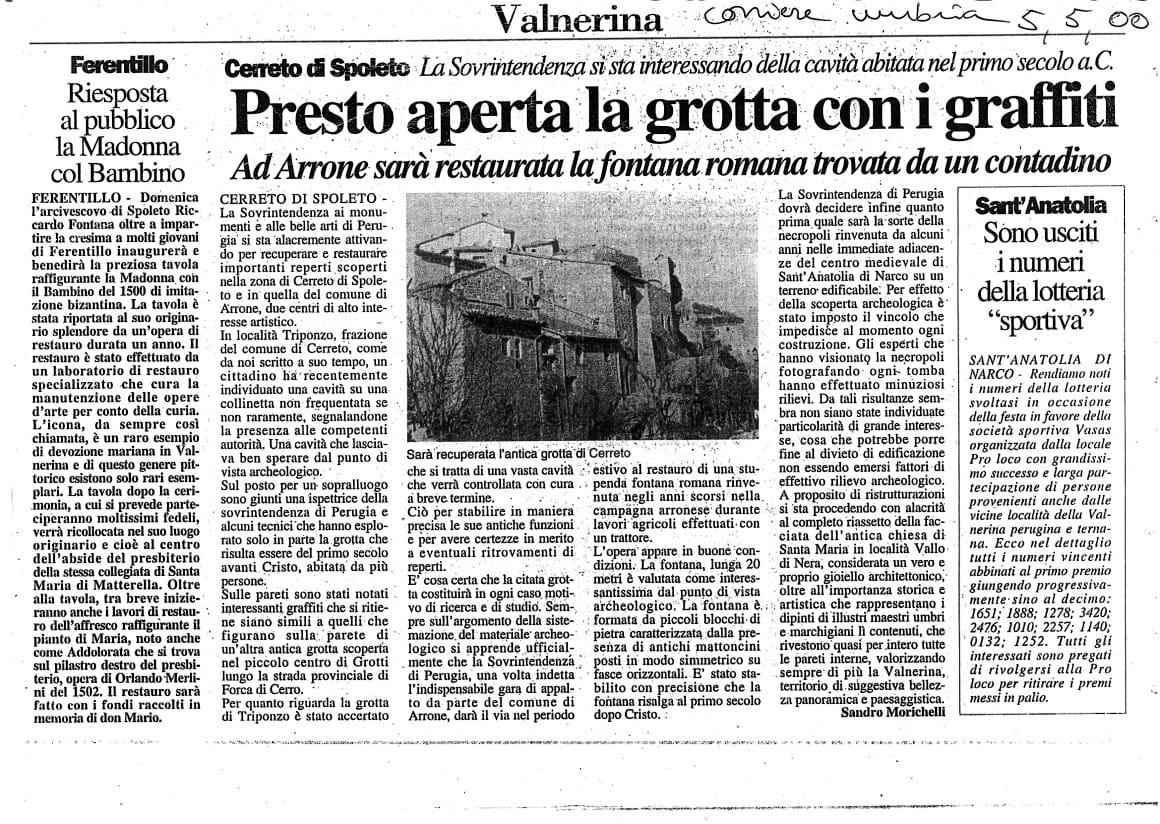Rock art of Umbria (Central Italy)
Initial Discovery and Systematic Surveys (2000-2010)
In this region, following the initial rock art discoveries at Riparo di Pale (Foligno, Perugia) and Riparo del Gabbio (Ferentillo, Terni) made in the late 1990s by the climber and artist Mr. Feliciano Benci of Foligno (Fig. 1), systematic surveys were conducted by the archaeologist Dr. Tommaso Mattioli (Fig. 2) in the early 2000s. These surveys resulted in the recording of ten new rock art sites, all but one featuring paintings. The detailed analysis was published in 2007 as a monographic volume of the 'Quaderni di Protostoria' series of the University of Perugia(1), curated by Prof. Gian Luigi Carancini. In 2012 a selection of the five most preserved and representative rock art sites of this region was published in the conference proceedings of the Istituto Italiano di Preistoria e Protostoria of Florence (2). These selected painted rock art sites are Riparo di Pale (Foligno, Perugia), Riparo delle Formiche Rosse (Santa Anatolia di Narco, Perugia), Riparo del Gabbio (Ferentillo, Terni), Riparo delle Mummie (Ferentillo, Terni), and Riparo dello Schioppo (Scheggino, Perugia).
Example of red colour rock art praying figure from Riparo di Pale in 2004: AMS dating indicates that the figure was painted between 5661±36 BCE 2σ and 1569±11 BCE 2σ
(photo by T. Mattioli)
Among the painted sites, Riparo di Pale stands out. This is a small shelter features red figures of praying anthropomorphs, deliberately executed over some lines of rainwater seeping along cracks and joints in the vertical wall: AMS dating indicates that one praying figure was painted between 5661±36 BCE 2σ and 1569±11 BCE 2σ, roughtly spanning the Early Neolithic to the Middle Bronze Age (3). Riparo delle Formiche Rosse exhibits an intriguing spatial arrangement of pictograms (Fig. 3). Tree-like anthropomorphic motifs in black colour are depicted on the vertical walls on both sides of this small triangular fissure, while two schematic anthropomorphs, also in black, are depicted on the ground at the vertex of this crevice, at the innermost point of the rock shelter. One anthropomorph is incomplete, while the other features a T-shaped face and bird-like feet. Another noteworthy aspect of the rock art in this region is found in Riparo delle Mummie I, where the rock surface, decorated with black motifs (caprids, phi-shaped anthropomorphs, geometric symbols) was previously prepared with a layer of red ochre.
Recent progress in rock art research (2010-2020)
Recent investigations have revealed additional traces of rock art on the south-eastern slope of the Sasso di Pale, expanding upon the earlier discovery documented by Tommaso Mattioli. Identified by photographer Giovanni Galardini and geologist Roberta Galli, these new red-painted markings appear on vertical rock surfaces and a slightly sloping rocky ledge (4). Although the figures are faint and difficult to interpret, their presence suggests a broader use of the mountain for symbolic or ritual purposes. No associated archaeological materials were found nearby, but a fragment of handmade pottery was recovered further south along the same rocky terrace (4).
In the Umbrian Apennines, three other locations in the Valnerina valley have yielded unverified reports of rock art. Near the castle of Umbriano, in the heart of Valnerina, incised rock carvings were documented by Carlo Favetti in 2005. Also in Valnerina, a cave known as the “Grotta dei Graffiti” (5) in the locality of Triponzo (Cerreto di Spoleto) was reported in a 2000 newspaper article, referencing generic “graffiti” inside the cavity. A third site, the Monte Eremita rock shelter, lies further north on the southeastern slope of the mountain, where a dramatic limestone cliff called Le Muraglie dominates the landscape. Partially explored in 2007 by archaeologist Tommaso Mattioli and guide Daniele Piermarini, this site remains unpublished and awaits proper documentation.
-
References
- (1) Mattioli, Tommaso: L'arte rupestre in Italia Centrale. Umbria, Lazio, Abruzzo, Quaderni di Protostoria, IV, Ali&No, Perugia, 2007.
- (2) Mattioli, Tommso: L'arte rupestre preistorica e protostorica dell'Umbria, Preistoria Alpina, Museo Tridentino Scienze Naturali, 46(II), 155-163, 2012
- (3) Mattioli, Tommaso: La datazione 14C delle concrezioni sigillanti una pittura rupestre del riparo di Pale (Foligno,Perugia). Preistoria Alpina, 46(II), 165-166, 2012.
- (4) D’Erme, L. (2022). ll Sasso di Pale in epoca preistorica e protostorica. In M. Albanesi, M. R. Picuti, & G. Sabatini (Eds.), Il Sasso di Pale di Foligno nel contesto antico della Bassa valle del Menotre : archeologia a scuola (pp. 27-31). San Sisto, Perugia: Fabrizio Fabbri.
- (5) Favetti, C. (2005). Ferentillo segreta... i luoghi del Silenzio: Fondazione Cassa di Risparmio di Terni e Narni.
Contents of this page









